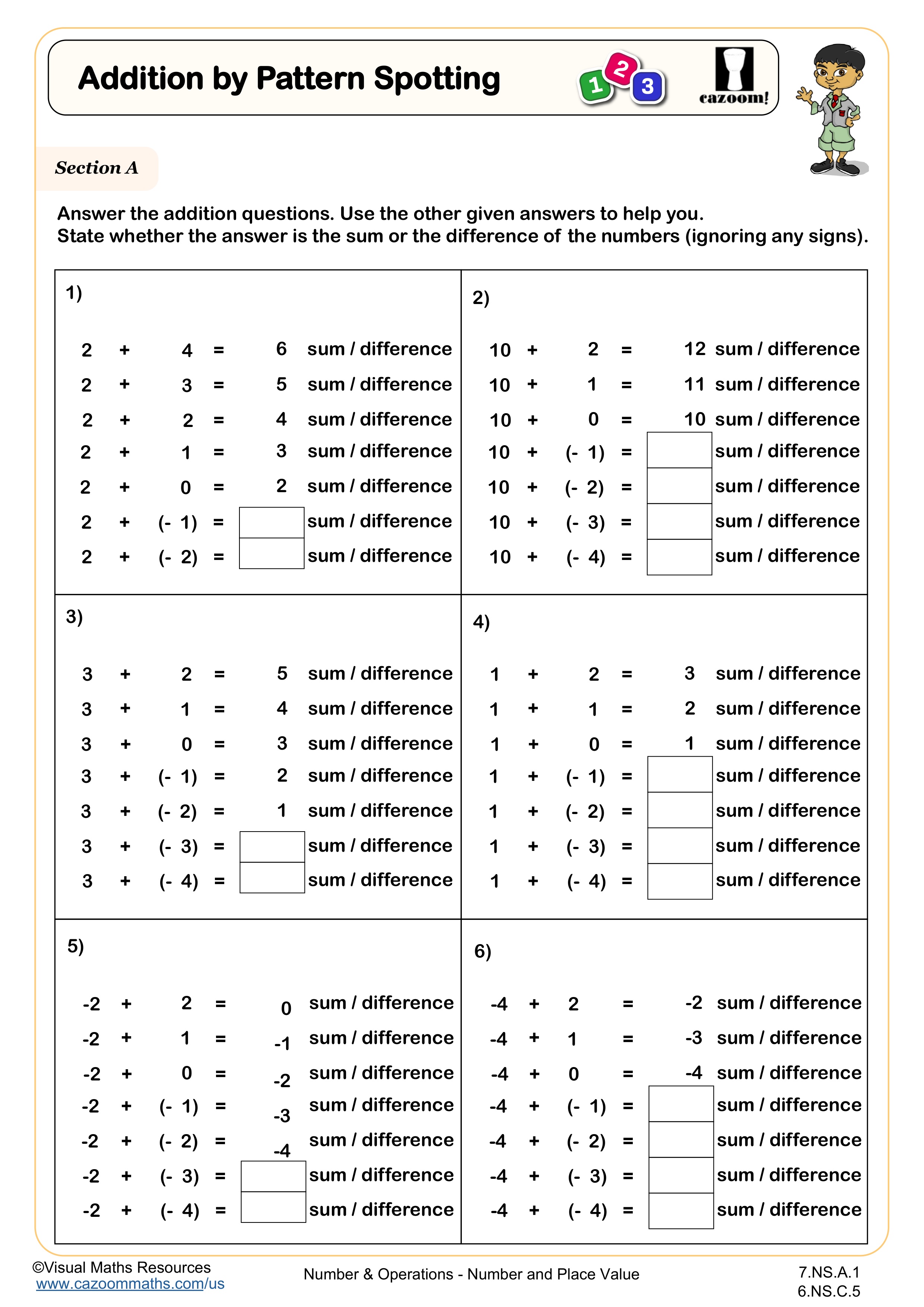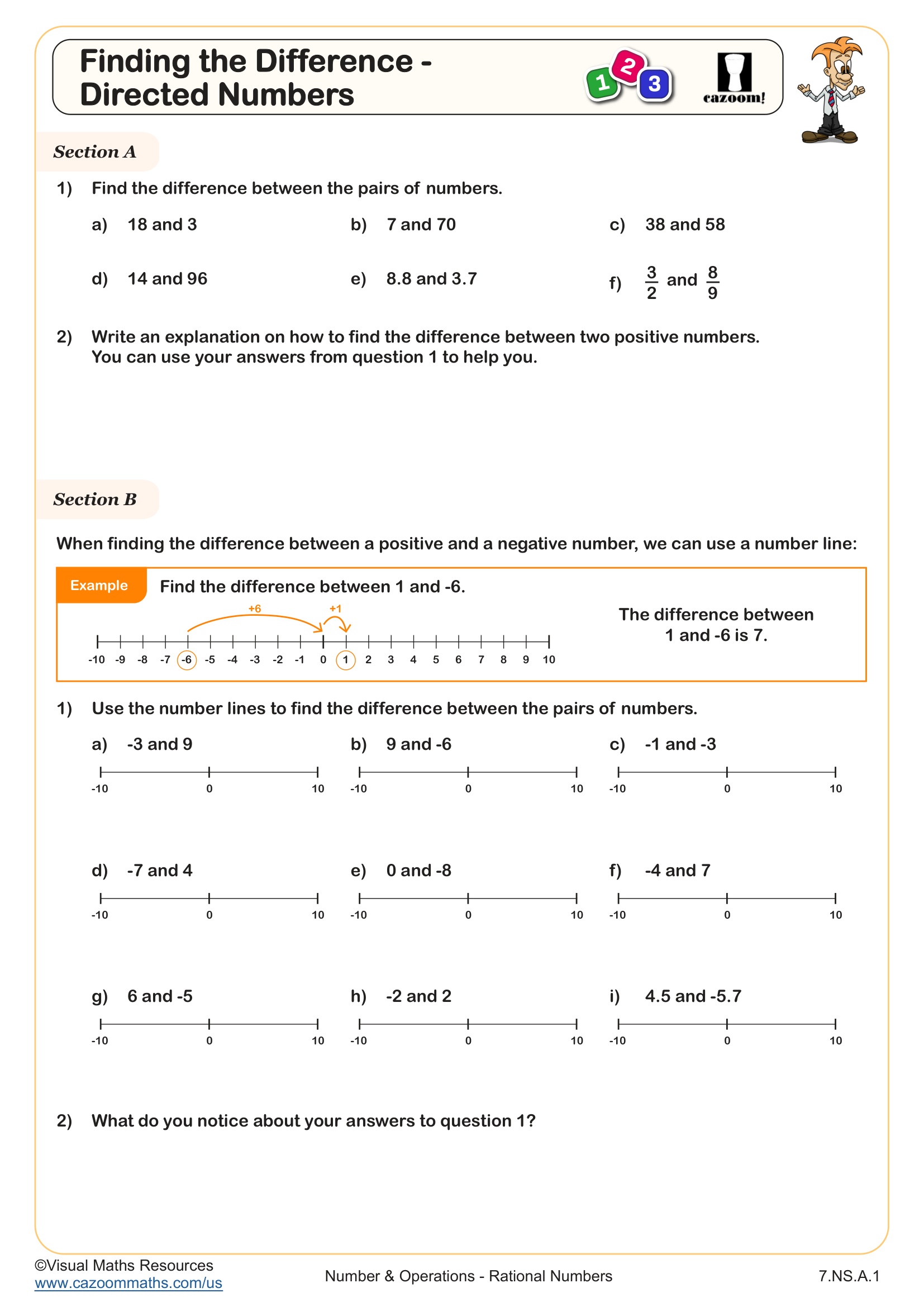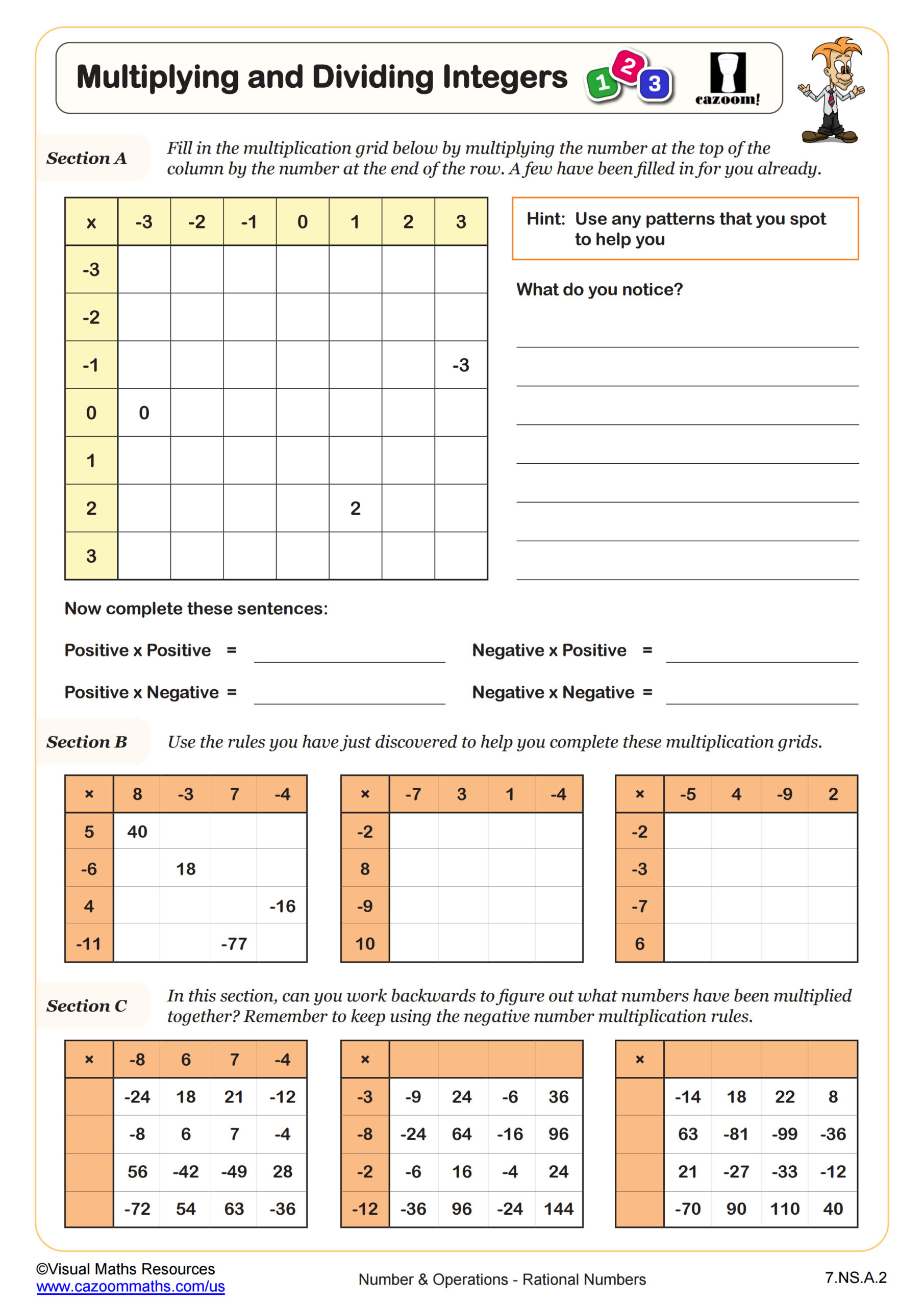Back to:
Addition by Pattern Spotting WORKSHEET
Suitable for Grades: 6th Grade, 7th Grade
CCSS: 6.NS.C.5, 7.NS.A.1
CCSS Description: Understand that positive and negative numbers are used together to describe quantities having opposite directions or values (e.g., temperature above/below zero, elevation above/below sea level, credits/debits, positive/negative electric charge); use positive and negative numbers to represent quantities in real-world contexts, explaining the meaning of 0 in each situation.
Apply and extend previous understandings of addition and subtraction to add and subtract rational numbers; represent addition and subtraction on a horizontal or vertical number line diagram. a. Describe situations in which opposite quantities combine to make 0. For example, a hydrogen atom has 0 charge because its two constituents are oppositely charged. b. Understand p + q as the number located a distance |q| from p, in the positive or negative direction depending on whether q is positive or negative. Show that a number and its opposite have a sum of 0 (are additive inverses). Interpret sums of rational numbers by describing real-world contexts. c. Understand subtraction of rational numbers as adding the additive inverse, p – q = p + (–q). Show that the distance between two rational numbers on the number line is the absolute value of their difference, and apply this principle in real-world contexts. d. Apply properties of operations as strategies to add and subtract rational numbers.
Apply and extend previous understandings of addition and subtraction to add and subtract rational numbers; represent addition and subtraction on a horizontal or vertical number line diagram. a. Describe situations in which opposite quantities combine to make 0. For example, a hydrogen atom has 0 charge because its two constituents are oppositely charged. b. Understand p + q as the number located a distance |q| from p, in the positive or negative direction depending on whether q is positive or negative. Show that a number and its opposite have a sum of 0 (are additive inverses). Interpret sums of rational numbers by describing real-world contexts. c. Understand subtraction of rational numbers as adding the additive inverse, p – q = p + (–q). Show that the distance between two rational numbers on the number line is the absolute value of their difference, and apply this principle in real-world contexts. d. Apply properties of operations as strategies to add and subtract rational numbers.
Addition by Pattern Spotting WORKSHEET DESCRIPTION
This worksheet will help learners understand addition with directed numbers through pattern recognition. The structured approach allows students to discover rules for adding positive and negative numbers by observing consistent patterns across multiple examples.
Section A presents six systematic sets of addition problems where one number remains constant while the other changes incrementally. Each set includes some completed examples to help learners identify patterns, with gaps for students to fill in missing answers. Crucially, learners must also determine whether each answer represents the sum or difference of the original numbers when signs are ignored.
Section B applies the patterns discovered in Section A to solve mixed addition problems involving positive and negative numbers. These questions require students to use their understanding of the underlying patterns rather than relying on rote memorization.
Section A presents six systematic sets of addition problems where one number remains constant while the other changes incrementally. Each set includes some completed examples to help learners identify patterns, with gaps for students to fill in missing answers. Crucially, learners must also determine whether each answer represents the sum or difference of the original numbers when signs are ignored.
Section B applies the patterns discovered in Section A to solve mixed addition problems involving positive and negative numbers. These questions require students to use their understanding of the underlying patterns rather than relying on rote memorization.


